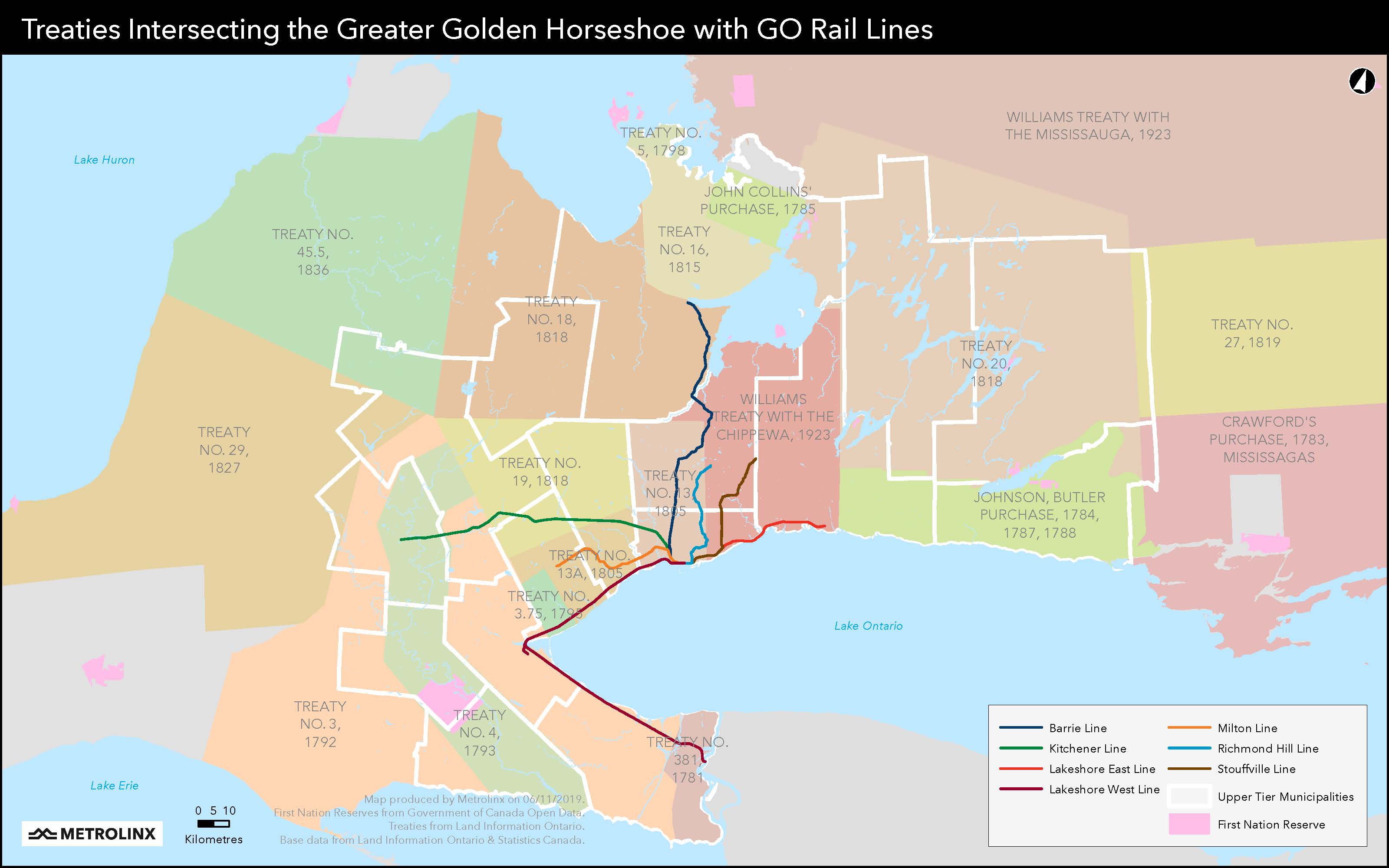Metrolinx marks Ontario Treaties Recognition Week
For Ontario Treaties Recognition Week, Metrolinx shows customers the history behind their routes.
Nov 8, 2019
The view from the passenger seat may have seemed largely unchanged over the years.
As passengers look out the windows of GO trains and buses, passing by homes, apartments, forests and suburban strip malls, few give much thought to a deeper history and hidden lines of what came before. Many regular customers believe they know the many markers along their routes – familiar streets and intersections and even the backs of buildings – but it’s all only a snapshot of this time in Ontario’s history.
Metrolinx – along with all residents, businesses and governments across the Greater Golden Horseshoe region – operates on the traditional territories of many nations, including the Wendat, Haudenosaunee and Anishnabeg Peoples. The sight of a subdivision next to a GO train corridor, perhaps built for a growing population in the 1980s, is actually the storied territory of one or more First Nations. And that history goes back, not decades, but since time immemorial.
This week (November 4-8) Metrolinx has been marking Treaties Recognition Week in Ontario, as an opportunity to reflect on the histories of these lands and the peoples who have been living in them for generations. As part of Treaties Recognition Week, Metrolinx has been launching an ongoing series of events to educate staff about the lands upon which it operates, and the peoples whose traditional home we travel across.
To understand what that means, in clearer lines, take a look at the graphic below. It overlays major GO train routes, across a map of established treaty lands in Ontario.
Along with that map, here are some other facts that may help to expand the view outside those transit vehicle windows.
In Ontario, 46 treaties were signed between First Nations and the British Crown between 1781 and 1930. These treaties are legally binding agreements that set out the rights, responsibilities and relationships between nations. They are the legal basis of all land use in Ontario, including settlement, industry, and transportation.
“It is important for our staff and customers to understand that without treaties, none of what has been built here would be present,” says Fallon Melander, Manager of Metrolinx’s Indigenous Relations Office.
“Without these treaties, the trains and buses we ride on, and the cities we travel through each day, would not be here.”
She adds that Metrolinx has begun taking steps to build meaningful relationships with Indigenous Peoples in its service area.
Next time you stare out the GO Train window on your daily commute, take a moment to look beyond the big box stores and condos, and remind yourself of the nations whose traditional territories you are passing through – made possible by the treaties they signed, in good faith, as agreements between nations.
The familiar view might suddenly expand in front of you.
If you would like to learn more about treaties, please click here.
